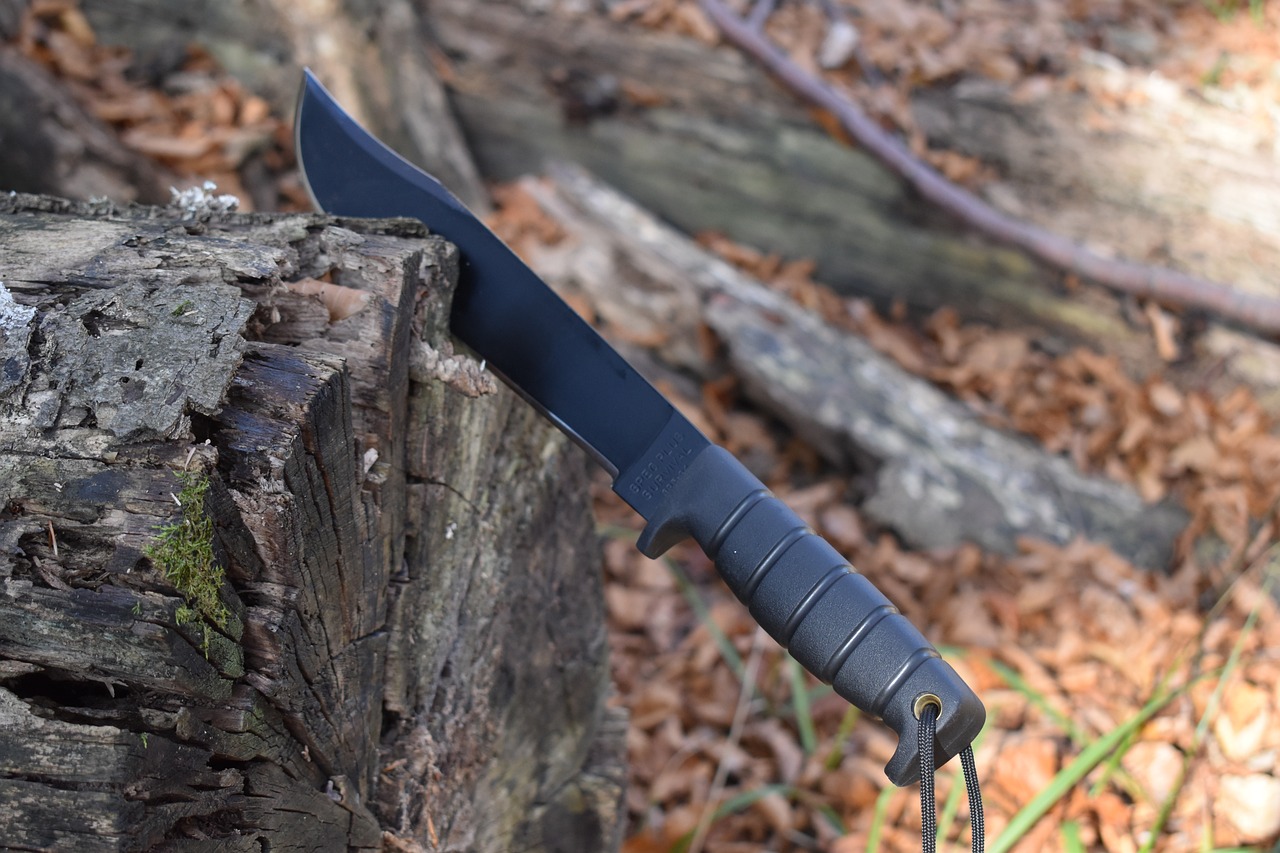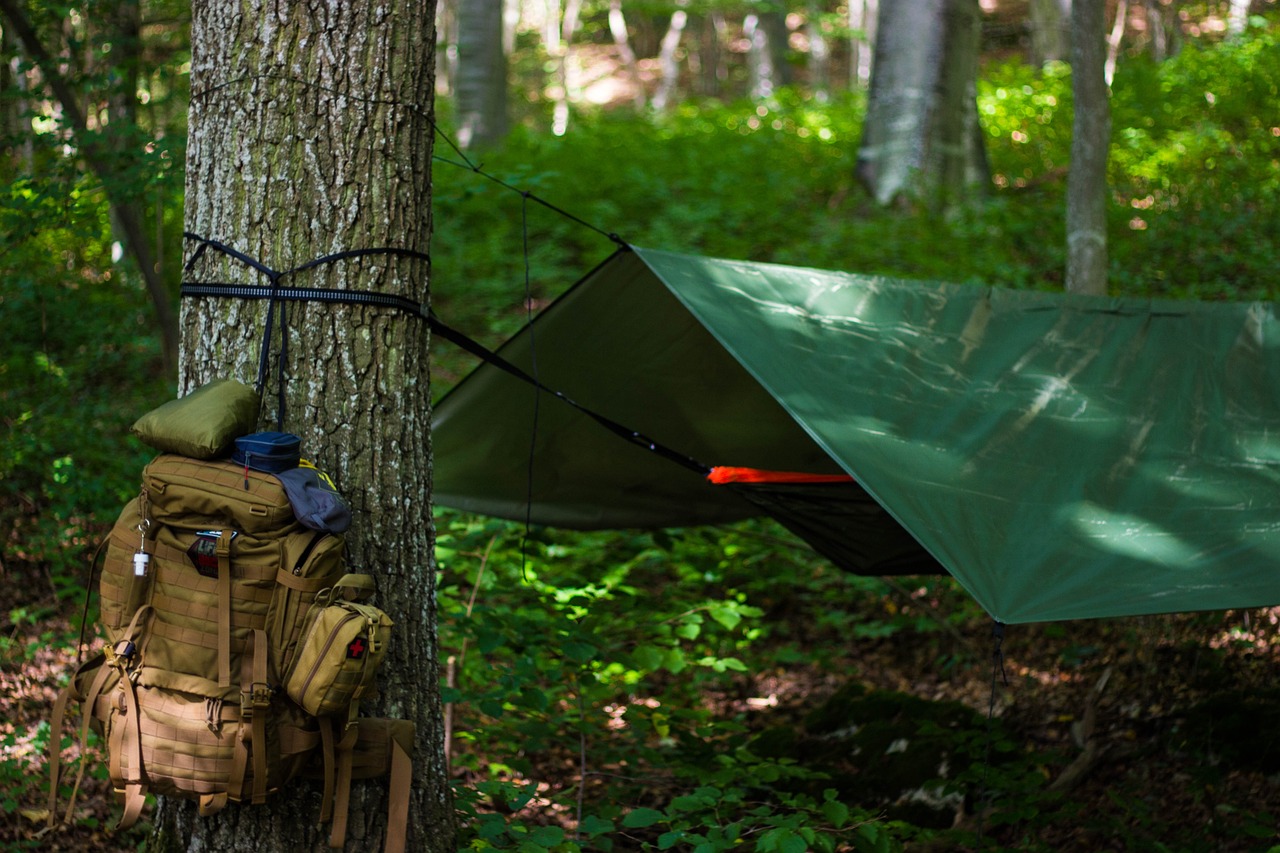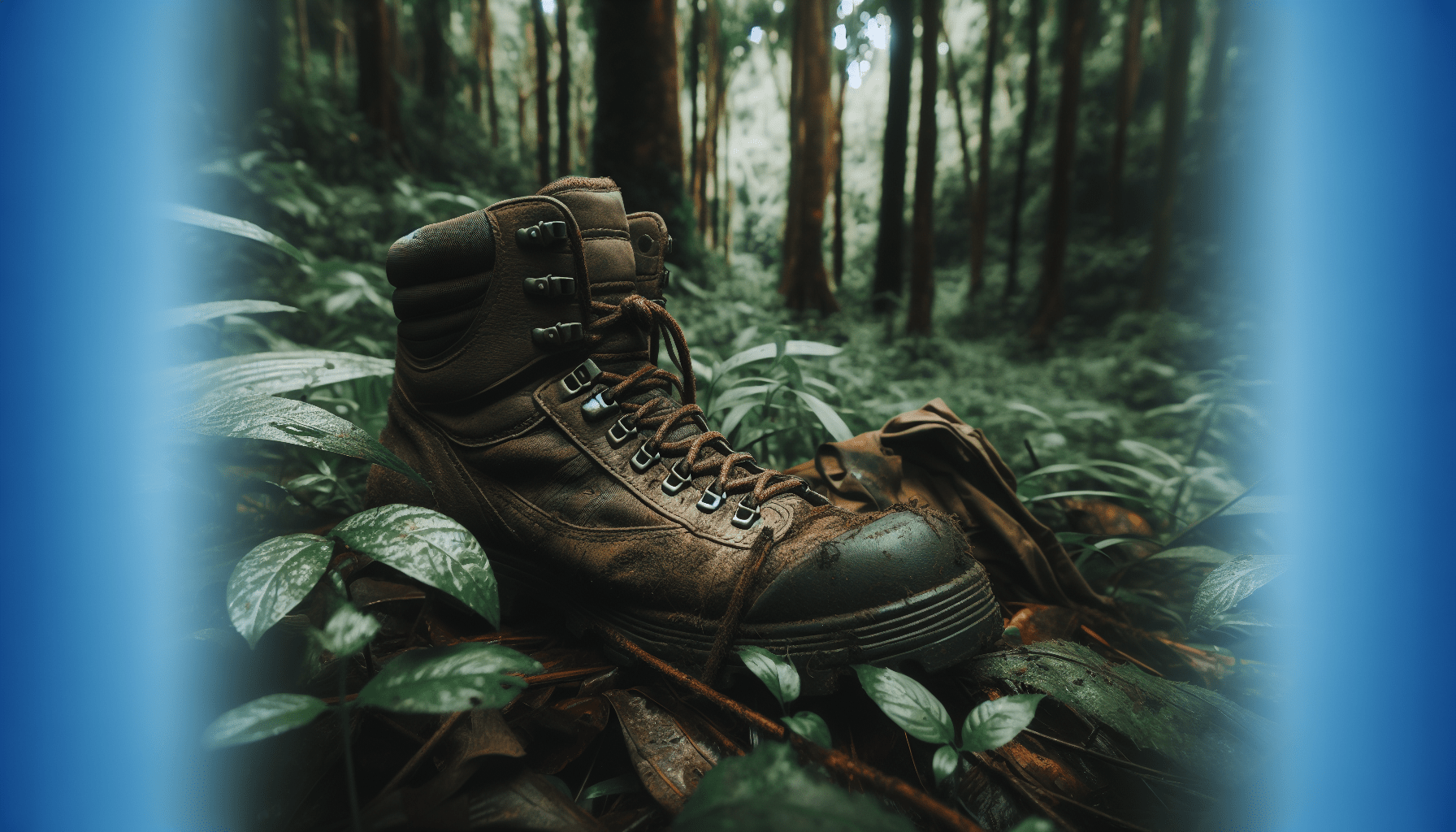Imagine finding yourself alone in the vast and untamed wilderness, with nothing but your wits and determination to keep you alive. In this article, you will discover invaluable tips and tricks on how to survive in the wilderness alone. From building a shelter and finding food to navigating without a compass, this guide will equip you with the knowledge and skills necessary to conquer the challenges of nature and emerge as a true wilderness survivor. So buckle up and prepare to embark on a thrilling and potentially life-saving adventure!
1. Locating Shelter
Understand the importance of shelter
When you find yourself alone in the wilderness, one of the first priorities is to locate suitable shelter. Shelter protects you from the harsh elements such as rain, wind, and extreme temperatures. It helps you conserve body heat and ensures your overall well-being. In a survival situation, not having proper shelter can have serious consequences on your health and safety.
Identify natural shelters
In your quest for shelter, it’s important to keep an eye out for natural structures that can provide some form of protection. Look for caves, overhangs, or fallen trees with ample coverage. These natural shelters can be more readily available and may require minimal effort to convert into suitable living spaces. However, always thoroughly assess the surroundings and ensure the shelter is safe and secure before settling in.
Create a makeshift shelter
If you can’t find a natural shelter, don’t worry. You can still create your own makeshift shelter using available resources. Look for materials such as large branches, leaves, and debris that can be used to construct a lean-to or debris hut. These types of shelters provide a barrier against the elements and help retain body heat. Remember to insulate the ground beneath you to further enhance warmth and comfort.
2. Finding a Source of Water
Recognize the significance of water
Water is essential for your survival, as it facilitates numerous bodily functions and prevents dehydration. In a wilderness scenario, finding a reliable source of water becomes crucial. Without access to clean water, your chances of survival diminish rapidly. Therefore, make it a top priority to locate a water source as soon as possible.
Locate natural water sources
While you’re in the wilderness, keep an eye out for natural water sources such as rivers, streams, or lakes. These are often abundant in remote areas and provide a readily available water supply. If you come across standing water, remember to purify it before consumption to avoid any waterborne diseases. As a general rule, it’s best to boil water for at least five minutes or use water purification tablets to ensure its safety.
Collect and purify water
To collect water from a natural source, find a clean container like a water bottle or a waterproof bag to store it in. Ideally, try to fill up your storage container whenever you come across a water source to ensure you have a steady supply. If you don’t have a container, you can improvise by making one out of natural materials such as a large leaf or a piece of birch bark. Remember to consistently purify the water you collect to eliminate any potential contaminants and minimize the risk of illness.

3. Starting a Fire
Learn the importance of fire
Fire serves multiple purposes when it comes to survival in the wilderness. It provides warmth, light, and a means to cook food. Furthermore, a well-maintained fire can also act as a deterrent against predators and provide a sense of comfort and security. Learning how to start a fire is an essential skill that can greatly enhance your chances of survival.
Gather firewood and tinder
To start a fire, you’ll need two primary components: firewood and tinder. Firewood consists of larger, sturdy pieces of wood that will sustain the fire, while tinder is a highly flammable material that helps ignite the fire initially. Look for dry leaves, small twigs, and bark as tinder, and gather larger branches and logs as firewood. It’s essential to gather more firewood than you initially think you’ll need, as maintaining the fire will require continuous additions of fuel.
Use fire-starting techniques
There are several techniques you can utilize to start a fire. The most common methods include using matches, a lighter, or a magnesium fire starter. It’s wise to carry a waterproof container with matches and a fire starter in your survival kit. Additionally, mastering alternative fire-starting techniques such as the bow drill or the hand drill can be invaluable in emergency situations when you don’t have access to conventional tools.
4. Obtaining Food
Assess available food sources
When you find yourself alone in the wilderness, finding sustenance becomes a priority. Start by assessing the available food sources in your surroundings. Look for edible plants, berries, nuts, and insects. Understanding which plants are safe to eat is crucial to avoid any potential toxicity. Familiarize yourself with local flora and fauna and educate yourself beforehand on edible plants in the area.
Practice foraging skills
Foraging involves gathering food from the wild, and it’s a skill that can significantly increase your chances of survival in the wilderness. To practice foraging, start by identifying common edible plants and learning about their seasons and locations. Be cautious and avoid consuming anything unless you are absolutely certain of its safety. Remember to forage responsibly, taking only what you need and being mindful of the environment.
Hunting and trapping techniques
If you have sufficient knowledge and experience, hunting and trapping can provide you with a more substantial food source. Learning basic hunting skills, such as tracking and using primitive traps, can greatly increase your chances of catching small game like rabbits or squirrels. It’s essential to be familiar with local laws and regulations regarding hunting, as well as ethical considerations to ensure you practice sustainable hunting techniques.

5. Navigating the Wilderness
Understand basic navigation methods
When you’re in the wilderness, knowing how to navigate your surroundings is crucial to find your way back to civilization or other necessary resources. Basic navigation methods include understanding directions, reading a compass, and using natural navigational cues such as the position of the sun or the stars. Familiarize yourself with basic map reading and navigation skills before venturing into the wilderness.
Utilize natural landmarks
Nature provides us with a variety of natural landmarks that can serve as navigational aids. Look for distinctive features such as rivers, mountains, or rock formations that can guide you. Using these landmarks as reference points can help you maintain a sense of direction and prevent getting lost. Additionally, marking your path with visible signs or symbols made from rocks or sticks can help you retrace your steps if needed.
Use simple tools for direction
In addition to natural landmarks, utilizing simple tools like a compass, a map, or a GPS device can greatly enhance your navigation capabilities. Carry these tools in your survival kit and practice using them to familiarize yourself with their operation. Always have a backup navigation method, as electronic devices may run out of battery or become damaged in extreme wilderness conditions.
6. Maintaining Personal Safety
Stay calm and avoid panic
One of the most critical factors in surviving alone in the wilderness is maintaining a calm and composed mindset. Panic can cloud your judgment and hinder your decision-making abilities. Take deep breaths, assess the situation logically, and create a plan of action. Remember that panic is a normal response, but with training and practice, you can learn to control it and stay focused on your survival priorities.
Be aware of potential dangers
Being aware of potential dangers in the wilderness is essential for your personal safety. Keep an eye out for venomous snakes, dangerous wildlife, or unstable terrain. Educate yourself about the specific dangers that exist in the area you’re in and take necessary precautions. This includes properly storing your food to avoid attracting wildlife and staying away from known habitats of potentially dangerous animals.
Create weapons for self-defense
In some situations, the ability to defend yourself may become necessary. Creating simple weapons for self-defense can help you deter predators and protect yourself. Improvised weapons can be made from sturdy branches, rocks, or even sharp bone shards. However, remember that avoiding confrontations whenever possible is generally the best strategy. Use these weapons as a last resort and focus on maintaining a distance from potential threats instead.

7. Managing Health and First Aid
Prioritize physical and mental well-being
When you’re alone in the wilderness, taking care of your physical and mental well-being is crucial for survival. Maintain personal hygiene by washing regularly and keeping wounds clean to prevent infection. Stay hydrated and well-rested, as fatigue and dehydration can impair your judgment and decision-making abilities. It’s also important to prioritize mental well-being by practicing mindfulness and finding moments of solitude for self-reflection.
Identify and treat common ailments
In a survival situation, common ailments can pose a significant threat to your well-being. Learn to identify symptoms of illnesses such as dehydration, hypothermia, or infections, and take immediate action. Carry a basic first aid manual in your survival kit to guide you through common treatments. Additionally, learn how to perform basic first aid techniques such as dressing wounds, splinting fractures, and treating minor burns.
Create a basic first aid kit
Having a well-equipped first aid kit is essential when facing medical emergencies in the wilderness. Your kit should include essential items such as bandages, antiseptic wipes, pain relievers, and adhesive tape. Consider including items specific to your personal needs, such as any necessary prescription medication or allergy treatments. Remember to regularly check and replenish your first aid kit to ensure it is fully stocked and up to date.
8. Staying Warm and Dry
Recognize the importance of insulation
Maintaining a stable body temperature is crucial for survival in the wilderness. Insulation plays a vital role in retaining body heat and preventing hypothermia in cold and wet conditions. Ensure you have adequate insulation in your shelter, clothing, and bedding to stay warm and dry. Layer your clothing, with a base layer that wicks away moisture, followed by insulating layers, and finally, a waterproof outer layer to protect against the elements.
Build and maintain a fire
Fire not only provides warmth but also helps to dry your clothes and gear. Invest time and effort into building and maintaining a well-controlled fire near your shelter. Keep the fire going throughout the night to maintain warmth and protect yourself from low temperatures. To maximize fire efficiency, gather more firewood than you think you’ll need and ensure it remains dry by stacking it off the ground and covering it with a waterproof material.
Construct clothing and bedding
If you find yourself without suitable clothing or bedding, you can create makeshift alternatives in the wilderness. Utilize natural resources such as leaves, moss, or animal fur to create additional insulation for clothing or bedding. Layer these materials inside your clothing or create a separate bedding area within your shelter to enhance warmth and comfort. However, ensure that any materials you use for insulation are safe, non-toxic, and won’t cause irritation or allergic reactions.

9. Signaling for Help
Understand the importance of signaling
In a survival situation, signaling for help can significantly increase your chances of being rescued. It’s crucial to understand that rescue teams cannot find you if they don’t know where to look. Signaling effectively can provide a clear indicator of your presence and alert potential rescuers to your location.
Use visual and auditory signals
Visual signals are effective in catching the attention of rescuers from afar. Utilize bright-colored materials, such as clothing or tarps, to create a visible signal. Arrange rocks or branches in a clear and deliberate pattern on the ground to attract attention. Auditory signals, such as whistles or shouting, can also alert nearby individuals of your presence. Create a consistent pattern or use emergency distress signals to ensure your signals are recognized as calls for help.
Create improvised distress signals
In situations where you don’t have access to conventional signaling tools, improvisation is key. Create distressed signals using whatever you have available. Attach reflective materials, such as a mirror or aluminum foil, to a stick and reflect sunlight towards potential rescue areas. Alternatively, use smoke signals by starting a fire and feeding it with green vegetation to produce thick, visible smoke. Remember to arm yourself with patience and continue signaling until help arrives.
10. Maintaining a Positive Mindset
Cultivate resilience and mental strength
Surviving alone in the wilderness can be mentally challenging, but cultivating resilience and mental strength is crucial for your well-being. Embrace the mindset that you’re capable of overcoming obstacles and trust in your ability to adapt to the environment. Practice positive self-talk and focus on your accomplishments rather than dwelling on the difficulties you face. Surround yourself with thoughts and memories that bring you joy and motivation.
Focus on basic survival tasks
In dire situations, it’s important to focus on the essential survival tasks to maintain a positive mindset. Concentrate on the immediate needs of shelter, water, and food. By directing your energy towards these tasks, you give yourself purpose and a sense of accomplishment. Breaking down larger challenges into smaller, manageable tasks can also alleviate feelings of being overwhelmed and help maintain a positive outlook.
Embrace solitude and self-reflection
Being alone in the wilderness offers a unique opportunity for self-reflection and personal growth. Embrace solitude as a chance to reconnect with yourself and appreciate the beauty of the natural world around you. Take time to reflect on your experiences, set goals, and reassess your priorities. Engage in activities that bring you inner peace, such as writing, drawing, or practicing meditation. By embracing solitude, you can nourish your mental well-being and find strength within yourself.
Surviving alone in the wilderness is a daunting challenge, but armed with the right knowledge and skills, you can increase your chances of making it through. Remember to always prioritize your safety, stay calm, and be resourceful. With perseverance and a positive mindset, you can navigate the wilderness and emerge stronger from this extraordinary experience.

